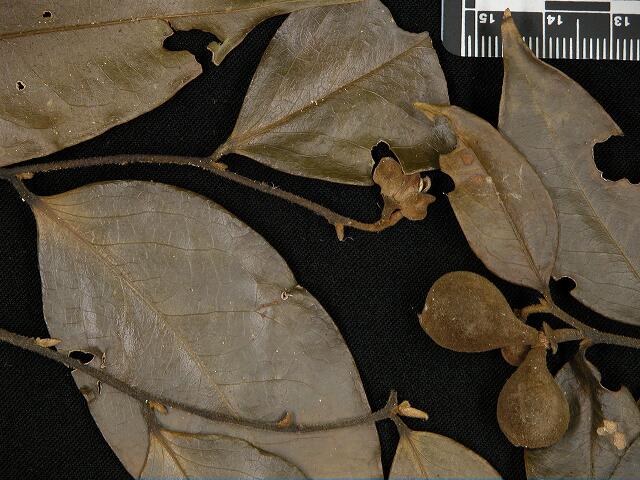Annonaceae
Trigynaea duckei (R. E. Fr.) R. E. Fr.

Kingdom: Plantae Rank: Species Parent: Trigynaea Status: Valid
Vegetative Morphology
Habit: Small to large tree to ca. 15 m tall.
Main axis: Bark strong, fibrous.
Branch: Stems slender, black when dry, smooth.
Leaves: Leaves simple, alternate; the petiole flat on upper surface, to ca. 5 mm long, black when dry, smooth, glabrous; the lamina elliptic, to ca. 6 x 15 cm, brown to grey-brown when dry, the base usually asymmetric, the apex short-acuminate, the margins entire; the secondary venation eucamptodromous, the secondary veins widely spaced, arcuate-ascending, finely reticulate with the tertiary veins.
Reproductive Morphology
Inflorescence: Inflorescence solitary, ramiflorous, axilary, or just above leaf scars, the pedicels articulate at the base.
Flowers: Flowers 1 per inflorescence; sepals green; petals white, triangular to ovate.
Fruit: Fruit apocarpous consisting of 1-2 monocarps, the monocarps globose to obovoid, to ca. 2 cm long, green to olive when mature, smooth or sometimes furrowed along one side, soft, brown pubescent when young, the base stipitate, the stipe to ca. 1 cm long.
Seeds: Seeds one to five per monocarp.
Other
Notes: This species is easily recognized by asymmetric leaf bases and finely reticulate venation.